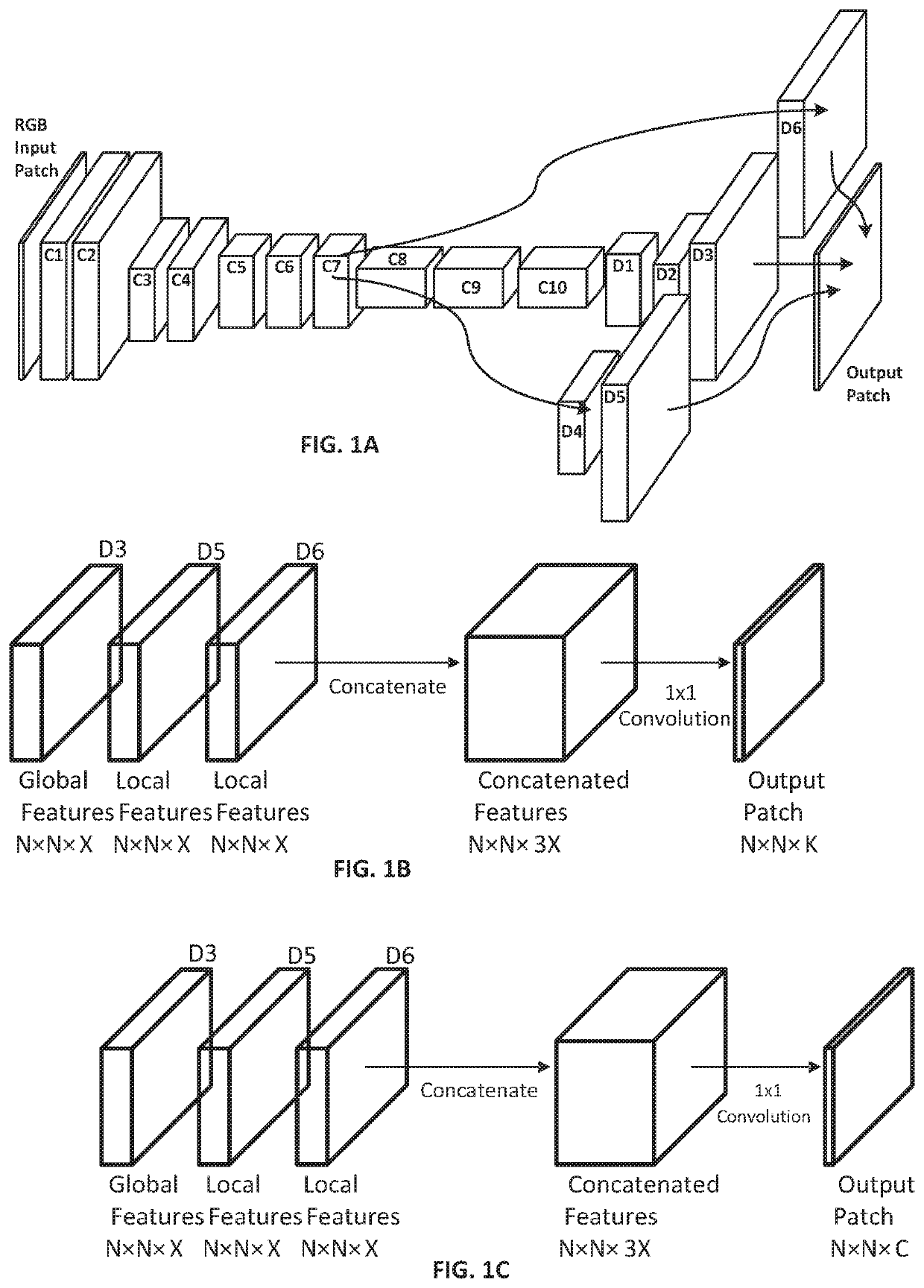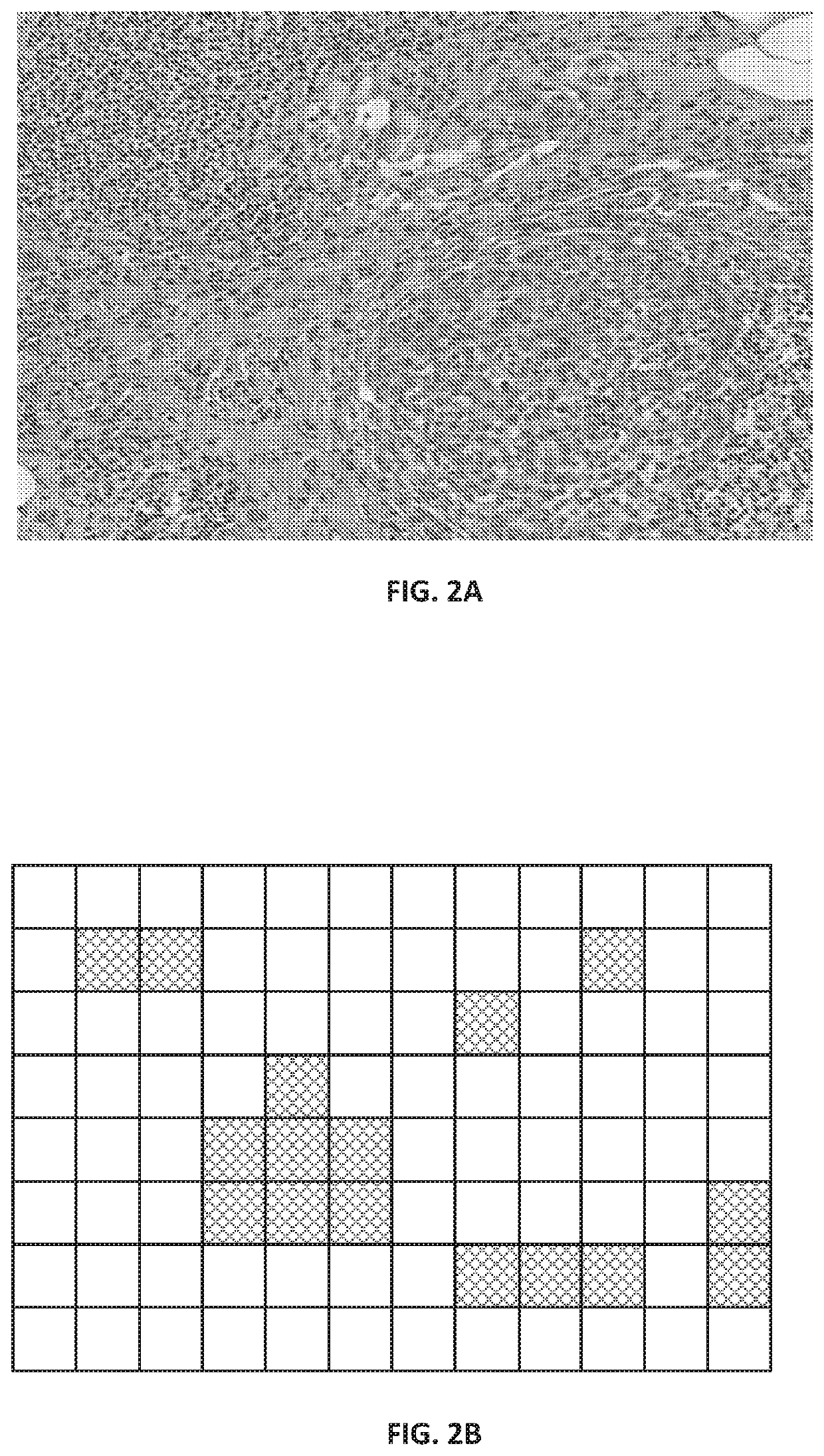Neural netork based identification of areas of interest in digital pathology images
a neural network and pathology image technology, applied in image enhancement, medical communication, instruments, etc., can solve the problems of lossless or lossy compression algorithm, difficult to detect morphological changes due to a test compound, tedious and error-prone process, etc., and achieve faster pathologist's review. , the effect of more reliabl
- Summary
- Abstract
- Description
- Claims
- Application Information
AI Technical Summary
Benefits of technology
Problems solved by technology
Method used
Image
Examples
example
[0144]FIG. 2A shows a portion of a raw image as a patch from an H&E-stained WSI in which the cluster of larger, dark purple cells in the bottom right quadrant is a tumor, while the smaller dark purple cells are lymphocytes.
[0145]FIG. 2B shows the predicted areas of interest generated by the CNN as a mask. FIG. 2B is a schematic representation of a binary mask as could be generated by our CNN where the binary mask is based on non-overlapping image tiles, with the cross-hatched tiles being the areas of interest and the unhatched tiles are areas that are predicted not to be of interest. It will be understood that if a tile-based approach is taken, the number of tiles would typically much higher than the 12×8 array shown, e.g. by an order of magnitude. In other examples, the areas of interest may have their perimeters configured to follow a shape-based segmentation algorithm, and so represent an arbitrary shape rather than squares or rectangles.
[0146]Acquisition & Image Processing
[0147]...
example embodiment
[0269]In one embodiment, a method employed by computer-automated system for processing a histological image of a tissue sample that has been treated with a test compound begins with receiving the histological image of the tissue sample, the histological image including a two-dimensional array of pixels. Next, the system applies a first convolutional neural network to the histological image to generate a first output image patch with a two-dimensional array of pixels with a mapping to that of the histology image. The first output image patch is generated by assigning one of a plurality of relevance classes to each pixel, wherein the plurality of relevance classes includes at least one class representing a pixel of interest and at least one class representing a pixel that is not of interest. Advantageously, the first convolutional neural network has been trained using a training data set comprising histological images and pathologist interaction data, wherein the pathologist interacti...
PUM
 Login to View More
Login to View More Abstract
Description
Claims
Application Information
 Login to View More
Login to View More - R&D
- Intellectual Property
- Life Sciences
- Materials
- Tech Scout
- Unparalleled Data Quality
- Higher Quality Content
- 60% Fewer Hallucinations
Browse by: Latest US Patents, China's latest patents, Technical Efficacy Thesaurus, Application Domain, Technology Topic, Popular Technical Reports.
© 2025 PatSnap. All rights reserved.Legal|Privacy policy|Modern Slavery Act Transparency Statement|Sitemap|About US| Contact US: help@patsnap.com



